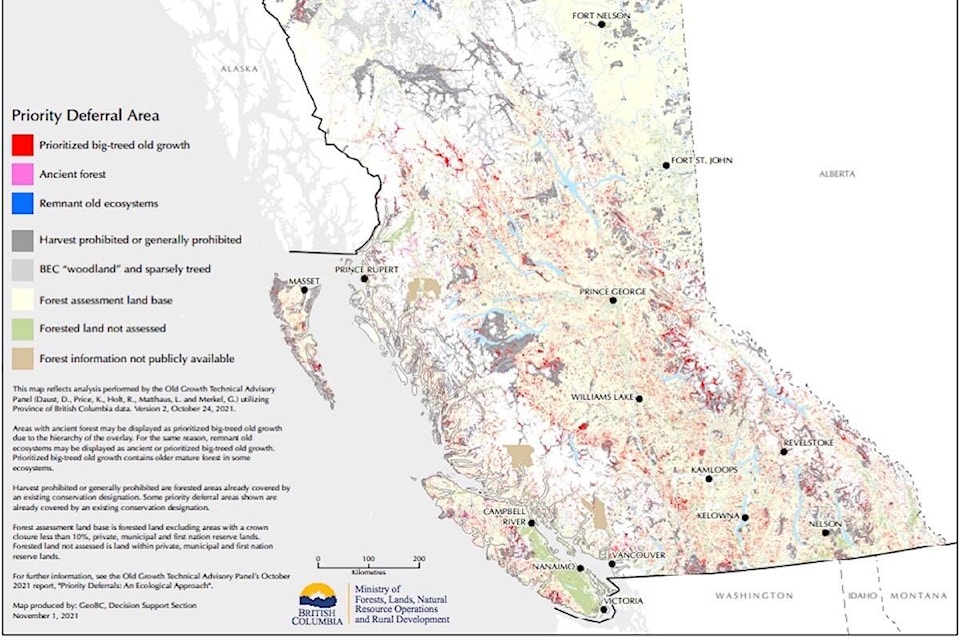The B.C. government’s old-growth protection plan recommends a two-year deferral of hundreds of areas that Forests Minister Katrine Conroy describes as the province’s “largest, rarest and most ancient old-growth forests,” covering 26,000 square kilometres across the province.
But what is actually protected depends on talks with Indigenous land rights holders, and could result in limited logging as landscape plans are developed. Conroy says some first nations have already indicated significant areas in their traditional territories that have already been deferred, and others are “very much interested in deferring” as plans are worked out.
In areas with logging permits identified as sites at high risk of ecosystem loss, licence holders are being asked to voluntarily defer harvest, and ministerial orders may be used to rescind permits and prevent new ones from being issued.
The province is aiming for a new old-growth strategy for 2023 with landscape management plans to replace the timber harvesting model that has been used for a century on B.C.’s Crown forest land. Work to update the province’s inventory of big-tree, ancient and rare old growth, with all of the identified rare and ancient zones recommended for deferral by a panel chaired by forester Garry Merkel.
“During the deferral, one of the things we’re going to be doing is talking to Indigenous nations about their wants, wishes and needs for the traditional territory the forest is situated on and talking about, is it looking at a total deferral?” Conroy said in unveiling the plan Nov. 2. “Is it looking at selected harvesting? Is it looking at working with them on an integrated landscape management plan? Moving forward, this is what we’ll be doing with the nations in that two year timeframe to see what direction we’re going to be moving in.”
The ministry estimates that if all of the deferral areas are protected, it would result in the loss of 4,500 jobs in the forest industry. Conroy says a program of retraining and early retirement is in the works, but industry representatives say the impact could be much greater.
RELATED: B.C. old-growth protection will hit hard, industry says
RELATED: B.C. recommends logging pause on 2.4M hectares
“We recognize that British Columbians are passionate about protecting at-risk old growth and we share that passion, but there were many viable options to find a balance that most people in our province could support,” said Bob Brash, executive director of the Truck Loggers Association. “Current old-growth harvesting represents only a fraction of the current 11.4 million hectares of old forests, of which over 75% is already protected or outside the timber harvesting land base.”
The Huu-ay-aht First Nations on Vancouver Island are among those with planning underway, with deferrals announced in June as protesters continued to disrupt logging in their territory.
“We will take the time we need to get it right,” Huu-ay-aht First Nations Chief Councillor Robert Dennis Sr. and Hereditary Chief Derek Peters said in a letter released Nov. 2. “That said, we expect to be in a position to decide by Jan. 15, 2022, if there will be any further old growth deferrals over the next two years in our traditional territory.”
@tomfletcherbc
tfletcher@blackpress.ca
Like us on Facebook and follow us on Twitter.
